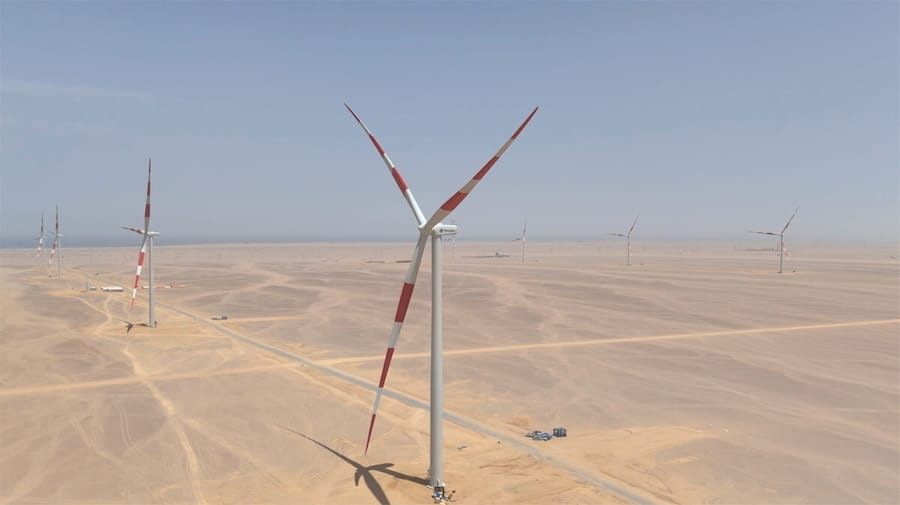This post was originally published on Eco Watch
Renewable energy company AMEA Power has commissioned a 500-megawatt wind energy plant in Ras Ghareb, Red Sea Governorate, Egypt. The plant will be the largest wind power site in Africa.
With this commissioning, AMEA Power will bring a total of 1 gigawatts of clean energy to Egypt, as the company also announced the commissioning of a 500-megawatt solar plant in Aswan, Egypt in late 2024.
“This is the future of power generation in Africa – clean, inclusive, and transformational,” Hussain Al Nowais, chairman of AMEA Power, said in a statement.
The plant will be jointly owned by AMEA Power (60% ownership) and Tokyo-based general trading company Sumitomo Corporation (40%). According to AMEA Power, the Amunet Wind Power Plant will save 28,223,000 tonnes of carbon dioxide emissions over its lifetime, or over 1.4 million tonnes per year.
Annually, the site will generate enough energy to power more than 500,000 households. The project is currently under construction and slated to be ready for operations by Q3 this year.
While the Amunet Wind Power Plant is expected to be the largest of its kind in Africa, it may not hold the title for long. Clean energy development is rapidly expanding, and already in January 2025, Acwa Power and HAU Energy announced a 1.1-gigawatt wind farm, also slated for Egypt. That site is expected to be in operation by 2027, Wind Power Monthly reported, and it will generate enough energy to power more than 1 million homes and offset 2.4 million tonnes of carbon emissions annually.
Located in Ras Ghareb, within the Red Sea Governorate, AMEA Power currently has this 500MW wind power project under construction, through its subsidy, Amunet Wind Power Company (AWPC). AMEA Power
Currently, the Lake Turkana Wind Farm holds the record for the largest wind energy site in Africa. The 310-megawatt wind farm, located in Kenya, has the capacity to generate enough energy to meet about 15% of Kenya’s electricity consumption, State of Green reported.
While clean energy development has great potential and is scaling across Africa, the World Economic Forum reported that many energy projects on the continent still heavily rely on fossil fuels and outdated infrastructure. The World Economic Forum also reported that while Africa has 20% of the global population, green energy investment remains low, with only 2% of the share of the market. Further, the continent is responsible for only 4% of global emissions, yet has a much greater burden from climate change, further emphasizing the need for more resilient energy sources and investments that take environmental justice into account.
As International Energy Agency reported, energy investments, particularly from the private sector, in Africa need to increase substantially to help the more than 600 million people living without access to electricity, especially in adapting to climate change.
“The African clean energy space represents a massive opportunity for growth, employment and innovation,” IEA stated. “All stakeholders – public and private, domestic and international – will need to play their part to move the continent towards a sustainable energy future.”
The post A 500MW Wind Energy Plant Launches in Egypt appeared first on EcoWatch.





0 Comments